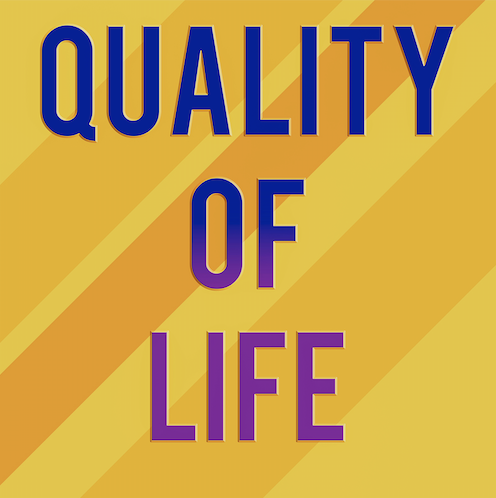
 When people seek me out as a Trauma Coach, it’s often after going through years of traditional, talk-based therapy, when they are at the end of their rope – drained and depleted physically, emotionally and spiritually as well.
When people seek me out as a Trauma Coach, it’s often after going through years of traditional, talk-based therapy, when they are at the end of their rope – drained and depleted physically, emotionally and spiritually as well.
Typically, when they first reach out to me, they are overwhelmed by their experience of past traumatic events. Some are frustrated by years of bouncing from therapist to therapist with little to no relief, while others don’t know where to begin to heal or how to move forward in their lives.
In most cases, the nervous system is over-loaded and dissociation is rife. They are vacillating from being hyper-vigilant at times to shut-down at others, desperately trying to find relief from extreme stress and anxiety, all while sorting through and making sense of the constant barrage of triggers and other sensory overwhelm.
If that weren’t enough, many of them are living with life-limiting conditions, addictions, weight issues, physical pain and other debilitating symptoms that they developed in the wake of the original traumatic event.
Irrespective of the individual circumstances and experiences of each client though, what I’ve found is that they all have one thing in common – at one point or another – they sabotage their healing journey.
They sabotage their healing, not because they don’t want to heal or because they don’t care, and not because they are somehow lacking in the skills or resilience to heal. No, they sabotage themselves because the healing process is not easy, and generally speaking, every fiber of our being wants to run away from the process!

It challenges our core belief systems, our identity, our coping mechanisms and our sense of safety. When we face these challenges, our body, brain and nervous systems are innately wired to do whatever it takes to maintain a sense of equilibrium and to ensure our safety and survival.
Whenever our healing journey requires us, even momentarily, to step out of alignment with our current identity, beliefs and perception of safety, we will be met with resistance and if we do not recognize this pattern, and work to consciously over-turn it, we will inevitably sabotage our progress.
For many people facing this conundrum, it feels easier and safer to bounce around from therapist to therapist, from coach to coach and from technique to technique, than it does to double-down and do the real work necessary for long-term healing.
It feels easier and safer to start and stop on our journey and to chop and change our approach than it does to commit to the deep work of true and lasting healing.
And so today, I want to shed some light on 3 of the most common reasons why people sabotage, stall and sometimes quit their healing journey altogether.
I want to show you how to spot the subtle signs of sabotage so you can catch yourself in the act, re-direct your efforts and learn to stay the distance. I want to help you avoid these major pitfalls to healing and guide you towards creating real and lasting change and true healing. Yes, everybody gets off track at some point, everybody gets triggered. Everybody sabotages their progress to some degree, but it doesn’t mean that we have to give up. When we can begin to recognize the unconscious patterns of behavior that we have been running – and why – we can then bring these patterns to conscious awareness and begin to make a different choice.
 When it comes to healing from trauma, I get it! You want it all to be over and to be over right now! The flashbacks, the panic attacks, the depression, the body memories, the physical illness, to name but a few possible manifestations of your trauma. You want it to stop. To stop affecting your life. To stop holding you back. To stop feeling so painful and raw.
When it comes to healing from trauma, I get it! You want it all to be over and to be over right now! The flashbacks, the panic attacks, the depression, the body memories, the physical illness, to name but a few possible manifestations of your trauma. You want it to stop. To stop affecting your life. To stop holding you back. To stop feeling so painful and raw.
The good news is… you can absolutely see improvements that are life-changing in a short period of time, especially using EFT Tapping and Somatic Experiencing (SE). However, depending on the level of trauma that you experienced, true and lasting healing may take longer. For example, a single-incident trauma (such as a car accident) may take less time to process and work through than more recurrent, pervasive trauma will.
 I know that’s not what you want to hear…and you may be feeling frustrated even reading this right now, but it doesn’t mean you should quit, get discouraged, or give up. Remember, any movement forwards, no matter how slow, is progress.
I know that’s not what you want to hear…and you may be feeling frustrated even reading this right now, but it doesn’t mean you should quit, get discouraged, or give up. Remember, any movement forwards, no matter how slow, is progress.
After all, if you experienced years of sexual abuse and trauma, and have carried the pain and suffering with you since then, resolving all of that in a matter of minutes, hours, or days, is perhaps a little bit of an unrealistic expectation for all of us. But…
What you can see is improvements in all aspects of your everyday experience of life, from your relationships, to your career, your health, your finances and so much more. And, ultimately, that is our goal: to have a better quality of life now. Yes, we can’t change the past. We can’t change what happened to us. But, we can change how our trauma is affecting us today – if we are willing to commit to the work and stay the course!
 The effects of sexual abuse and trauma are typically long-lasting and consequently, healing from it is a journey that takes time.
The effects of sexual abuse and trauma are typically long-lasting and consequently, healing from it is a journey that takes time.
It’s easy to understand, in today’s society and culture however, why so many people get frustrated with the perceived slow speed of their recovery and quit on their healing journey too soon.
They are looking for the quick fix. There is heavy emphasis on speed and instant gratification all around us; the constant striving for the next thing that promises to fix everything and deliver happiness now; the band aid approach to life.
I get it, no one wants to live in pain and suffering. That’s why addictions, be it to food, substances, anti-depressants, opioids, shopping or even the distraction of social media are so rife today. It’s easier to check-out than it is to face what’s really causing us so much pain and suffering. But…
For true and lasting healing to take place, we have to be willing to rip off the band aid; to dive-deep and do the real work of healing. While techniques like EFT Tapping and SE can help to process things faster, you still have to do the work. It’s not always easy, but it’s worth it.
 What emotional, physical or psychological symptoms do you still experience? Do you struggle to form or maintain close friendships or intimate relationships? Do you experience hyper-vigilance, anxiety or panic attacks?
What emotional, physical or psychological symptoms do you still experience? Do you struggle to form or maintain close friendships or intimate relationships? Do you experience hyper-vigilance, anxiety or panic attacks?
Do you have physical symptoms or intrusive flashbacks? How has your trauma held you back in your life? What has it stopped you from doing or being? Are you finally ready to do the work necessary to truly move forward?
For me, PTSD symptoms were showing up in my body. I had terrible headaches and insomnia and when I did sleep I was plagued by violent nightmares. My adrenals were working overtime and my cortisol levels were severely dis-regulated. I could never relax and hyper-vigilance and panic attacks were my norm.
Everyone around me seemed happy and this only fueled my negative self-talk. ‘What’s wrong with me? Why is this taking so long? Am I broken? This is hopeless! Why can’t I just be happy? Other people have been through far worse.’ But the truth is…
None of this self-criticism is helpful. And so we have a choice to make. Either we can stay stuck in the rut of our trauma, lamenting how long it’s taking to heal, or we can choose to move forwards one symptom, one memory, one event and one day at a time, knowing that no matter how slow we go, forwards is forwards. There is hope. Life can be different. Healing is possible. It just might take a little time.
 Start to become aware of all the times that you say aloud or to yourself that your healing journey is taking too long.
Start to become aware of all the times that you say aloud or to yourself that your healing journey is taking too long.
Ask yourself ‘is this really true?’ Notice if this comes up right as you’re hitting on some new threshold or identity issue.
Begin to bring conscious awareness to this pattern of behavior.
For example, I frequently used to find myself saying this ‘this is taking too long’ whenever I was trying to process shame, terror or other challenging emotions. All of a sudden, I’d find myself backing-away from the work. I’d go from being in the present moment, processing an emotion to frantically back-pedaling, distracting myself with endless to-dos and busy-ness, all the while wondering why I wasn’t getting anywhere.
So, whenever you’re able to spot this kind of time-based sabotage, pause and ask yourself: ‘is this really true or am I coming up against something that is making me feel uncomfortable, unsafe or afraid?’
Most likely, you will find that what you’ve hit upon is some resistance to some part of your healing work. When we can notice this resistance (in my case the resistance to processing shame) we can work to release it with Tapping and move forward in our healing once more.
 A large part of what I do as a Trauma Coach, is to help my clients develop a tolerance for being present in their body in the here and now as we work together to resolve and heal past traumatic events. For many people who have experienced emotional, physical, sexual abuse or trauma, being present in their body feels extremely challenging and dangerous. It’s not surprising then, that I see dissociative, fear-based sabotage all the time.
A large part of what I do as a Trauma Coach, is to help my clients develop a tolerance for being present in their body in the here and now as we work together to resolve and heal past traumatic events. For many people who have experienced emotional, physical, sexual abuse or trauma, being present in their body feels extremely challenging and dangerous. It’s not surprising then, that I see dissociative, fear-based sabotage all the time.
The simple fact is that trauma gets stored in the body. We may not have conscious memories of our trauma, but our body remembers.
Using Somatic Experiencing (SE), I guide people towards a felt-sense or body awareness of how their trauma is stored in their body and from there we work gently and safely to release the pent-up or thwarted survival energies.
For example, trauma might show up in a person as pain symptoms such as neuropathy, jaw pain or chronic migraines. Oftentimes, the idea of what might be underneath this physical pain brings with it high levels of fear, dread, panic and dissociation (even if it’s dealt with in a very gentle way). Typically, the fear of feeling an emotion or sensation is far worse than the actual experience of being present with it.
And so, although a client may really want to heal, as soon as they begin to touch-into body sensations, feelings or emotions, they are likely to sabotage their efforts and leave their body or ‘dissociate’.
Perhaps you can relate to this experience of dissociating whenever you try to focus on your own body sensations, such as your breathing or areas of tightness or constriction. If so, it’s important to recognize the pattern before bolting to the door and quitting your work, never to return for another session!
I understand this fear-based sabotage all too well because I spent many years staying far, far away from my body and the reality of the trauma I experienced as a child. It did not feel safe to register body sensations or emotions. As a very young child, I learned that freeze and dissociation were my best chance at survival and I became adept at dissociating.
It’s really important to understand that, when faced with the overwhelm of a traumatic event or experience, the body does whatever it can in order to survive. When fight or flight responses are not possible (usually because our nervous system deems these responses unsafe, such as during a highway collision or rape), the body resorts to freeze. Linked to that freeze state is dissociation. The challenge is though, that this freeze/dissociation response can become habituated and can prevent us from moving forwards with our healing, or cause us to stop entirely.
 I had one client recently, let’s call him *Bob*, who experienced this kind of habituated dissociation. Bob would lose all feeling in his right arm every time we talked about his rape.
I had one client recently, let’s call him *Bob*, who experienced this kind of habituated dissociation. Bob would lose all feeling in his right arm every time we talked about his rape.
We worked on this for several sessions. Week after week he would try to avoid the subject. He would distract himself with family drama and the various pain symptoms popping up around his body. He would call last minute to re-schedule sessions. But he did not quit. Bit by bit he persevered.
One day, after a lot of work to address his fears of punishment and repercussions, he was able to connect with the rage he felt towards the perpetrator. Yes, it was intense for him in the moment, but he finally released the fight-energy bound-up in the urge to punch the person who had caused him so much emotional and physical pain all those years ago. By connecting to his emotion (rage) and noticing how it was stored in his right arm, Bob was able to sit with his arm as the fight energy dissipated and he found relief.
 When a person has PTSD symptoms and a history of trauma, they very often have little sense of safety in their body and limited awareness that their trauma is in the past. They respond as if their abuse were happening today. They are unable to grasp that the threat is over. This is because trauma does not involve our rational brain. Our responses are firmly rooted in the mechanisms of our reptilian and limbic brain systems. The body and nervous system react as if the threat is still present today.
When a person has PTSD symptoms and a history of trauma, they very often have little sense of safety in their body and limited awareness that their trauma is in the past. They respond as if their abuse were happening today. They are unable to grasp that the threat is over. This is because trauma does not involve our rational brain. Our responses are firmly rooted in the mechanisms of our reptilian and limbic brain systems. The body and nervous system react as if the threat is still present today.
No matter how hard we try to move forwards and heal, unless we address this aspect of safety in the body, our body is likely to continue to say ‘NO’ to the work and sabotage our healing journey. Unless we can befriend our body, healing will not feel safe. Re-membering will not feel safe.
Take a moment to ask yourself how this plays out in your own life. When you notice feelings or body sensations linked to your trauma, what do you do? Do you dissociate? Do you freeze? Do you turn to food, medications or other substances to mask your pain or emotions? Do you zone out or self-harm? Do you constantly clean or find other ways to feel in control? Do you sleep for hours or barely at all? Or maybe you run marathons or pursue other extreme sports?
Whatever tools or strategies you have developed to cope, there is a more balanced way to approach our feelings and sensations that doesn’t leave us feeling terrified, numb or re-traumatized.
Crucially, lasting healing in the face of dissociative tendencies is about finding the balance between being firmly rooted in the here and now whilst at the same time exploring body sensations, feelings and emotions linked to back then.
When we can become aware of how we distract ourself and dissociate away from uncomfortable feelings, emotions and sensations, we can learn how to slow down and ground ourselves. It is from this grounded, embodied place that we can begin to really listen to our body. We can break the healing process down in to tiny, manageable pieces so that instead of bolting for the door, you can feel safe enough to continue your healing journey and finally find the healing and relief that you deserve.
 Take a piece of blank paper and a pen or pencil. Draw a stick figure version of your body. Next, take some deep breaths and feel your feet on the floor. Feel your legs and back being supported by the chair you’re sitting in. Now, start at the stick figure’s head and work your way downwards towards the feet.
Take a piece of blank paper and a pen or pencil. Draw a stick figure version of your body. Next, take some deep breaths and feel your feet on the floor. Feel your legs and back being supported by the chair you’re sitting in. Now, start at the stick figure’s head and work your way downwards towards the feet.
Mark or color any areas of tension, constriction, pain or emotion that you’re aware of in your body on the drawing in front of you. No judgement, no good or bad, just notice whatever is present. Perhaps you notice tension in your jaw, a knot in your left shoulder, sadness in your chest, a grumble in your belly, and a sharp pain in your right ankle.
When you’ve finished adding to your drawing, take a few more deep breaths in. While looking at your picture, take just a moment to be with the drawing and with the sensations depicted on the page.
Notice how it feels to create a safe container; a little space and time between your body and the sensations drawn on the page in front of you. You can use this drawing and your observations as a starting point for Tapping to release any pain, emotion or discomfort. This is a fantastic way to begin to build the relationship and communication between you and your body felt-sense.
 The idea of letting go of our trauma can be terrifying. After all, it is extremely familiar to us and we may have been carrying its burden for years or decades. Because of this familiarity, the magnitude of all that our life could have to offer without the pain, suffering, symptoms, dis-ease or trauma can fill us with panic, and the potential for success or failure, traveling or dating can trigger an identity crisis that can cause us to sabotage our healing journey.
The idea of letting go of our trauma can be terrifying. After all, it is extremely familiar to us and we may have been carrying its burden for years or decades. Because of this familiarity, the magnitude of all that our life could have to offer without the pain, suffering, symptoms, dis-ease or trauma can fill us with panic, and the potential for success or failure, traveling or dating can trigger an identity crisis that can cause us to sabotage our healing journey.
So often, I work with people who make massive progress in terms of alleviating symptoms and issues such as insomnia, anxiety, panic, weight gain and addictions. I sit with people every day as they re-negotiate highly traumatic events and safely process strong emotions such as grief, rage and shame. These are people with huge amounts of courage, strength and determination. But sooner or later, every person I have ever worked with comes up against some kind of ‘identity sabotage’.
Healing challenges our core belief systems, our coping mechanisms, our sense of safety and our identity. When we face our trauma, our body, brain and nervous systems are hard-wired to do whatever it takes to maintain a sense of equilibrium in order to ensure our safety and survival.
This is why, whenever we rock the boat of healing, we encounter resistance. Anything that might challenge the status-quo or change our life (even for the better) is a threat. Let’s look at the case of my client *Joanne*, to find out more.
Joanne had been physically and verbally abused by her mother for many years. Her self-esteem was at rock bottom when we began our work. She was in and out of work and suffered with scoliosis of her spine and terrible joint pain. As we worked to process her traumatic past, her pain subsided and her confidence grew. Interestingly, as the fear of her mother diminished, her shoulders no longer drooped, the tension in her spine released and her posture straightened remarkably. She got a job she loved and took up canoeing as a new hobby. It was at this point that she began to consider dating.
And that’s when the identity sabotage kicked in. You see, a core belief that Joanne had taken on as part of her identity was the idea that she was ugly and unworthy of love. Her mother had repeatedly told her that she was ‘ugly and would always be alone’ and although she had done so much work to heal, the idea of dating brought up some major sabotage.
 Joanne went on a couple of dates but her car broke down on the way to one and on the other the waiter spilled french onion soup on her dress.
Joanne went on a couple of dates but her car broke down on the way to one and on the other the waiter spilled french onion soup on her dress.
She believed very strongly that these experiences were proof that she should not be dating and that she was still unworthy of love. It took several sessions to untangle this idea and help her move forwards once more.
Can you relate to this kind of identity sabotage? Perhaps you’ve said things like ‘but I don’t know who I’ll be if I let this go. It’s all I’ve ever known. I have to hold on to my hyper-vigilance because if I let it go, I know bad things will happen again. I’ve stopped smoking, but now I feel anxious all the time and I just want to stuff my face. I can’t be too visible or successful or else I’ll be punished.’
These are all examples of identity-based challenges that can de-rail our healing journey if we don’t bring them into our conscious awareness. Take an addiction or a craving for instance. If a person is a shop-aholic and they quit their habit, unless they address the underlying identity need that the habit was meeting – eg. ‘wearing new clothes helps me feel confident and out-going’ – then they will be left with a chasm or an identity void that will likely be filled with a different negative coping behavior or strategy.
This is why, if we only address the symptom or behavior (such as smoking or self-harm) without considering the underlying core issue, the person who was a smoker may choose to comfort-eat, gamble, shop or form some other addiction. It is essential when working with identity to create a bridge of sorts from where you were before healing work began, to where you are going. You may not be there yet, but conscious awareness is the first step to choosing and creating our new identity that will grow and expand as you continue to heal.
 Take a moment to think about your trauma history. What has it cost you? How has it defined you? What has it prevented you from doing? Write down what comes to mind. It might look something like this:
Take a moment to think about your trauma history. What has it cost you? How has it defined you? What has it prevented you from doing? Write down what comes to mind. It might look something like this:
I’m not confident
I am shy
I’m sensitive
I’m terrible at math
I play small in my career
I don’t like going out in big groups – I’m better one-on-one
I doubt myself and second guess myself all the time
I’m not athletic
It’s not safe to flirt or be sexy
Now, if each one of the phrases above were written on a table top, how many legs or pieces of evidence would you have to support each phrase? If my table top says ‘it’s not safe to flirt or be sexy’, how many pieces of evidence (table legs) might I have holding up that identity belief (table)?
I might have evidence like:
The date I went on when I flirted and the guy tried to kiss me when I didn’t want him to.
The time I wore a short dress and a man cat-called saying I looked like a slut.
Pick one table top belief from the phrases you wrote down. Check in to see how strongly you believe your table-top identity belief on a scale of 0-10 where 0 is the least true and 10 is the most true. Add the legs or evidence to your table. Rate each piece of evidence as you did with the core belief statement (table top). Now, beginning with the piece of evidence with the highest rating, start to tap to reduce the intensity around it.
Continue to tap on each piece of evidence. What you will most likely find is that the more pieces of evidence (table legs) that you tap on and clear, your table top (belief) will eventually collapse.
This is a wonderful tool for helping us recognize our otherwise unconscious core identity beliefs. When we can bring these beliefs to our conscious awareness and tap to release the intensity around them, we can gradually shift our identity in a way that feels safe, congruent, and authentic. This reduces our need to sabotage our healing journey and keeps us moving forward towards the life we want and deserve.
As you can see, there are so many different ways in which we can sabotage our progress. I hope that this article has given you some insight into the fact that you are not alone. These patterns are common among all trauma survivors and sooner or later, we all face these challenges that make us want to quit. But hopefully, by bringing these major types of sabotage out in the open, you can recognize and avoid the major pitfalls that could otherwise derail and sabotage your healing journey.
As ever, if you need support, please reach out to me on Instagram or Facebook or go here to set up a free healing consultation today.
*Please note that all client names have been changed to protect their identity and that the information shared is used in a generic way only – to facilitate healing and understanding among my readers.

Hi Karen,
As I read though your article I recognize my self-sabotage behaviours. As I got closer to the end of the information you shared I could feel myself resisting. I felt overwhelmed by time I finished. I know at the end of the day the choice is mine to continue on my healing journey. I allow so many other distractions to get in the way of my progressing. To keep making the choice to REALLY work and get past what holds me back is essential. I’ve never done anything harder for myself. I shut down so easily.
Donna
Keep going Donna, one day at a time. You can do this! I believe in you! 🙂
Dear Karen,
What an excellent,detailed and easy to understand outline about self sabotage and resistance to healing.Thank you.
As a midwife and pre -perinatal psychologist,I am familiar with this .
Thank you Roma, I’m glad you found this clear and helpful. And what a hugely important profession you’re in! I adored my midwife – and was lucky enough to have the same one with all three of my babies. ❤️